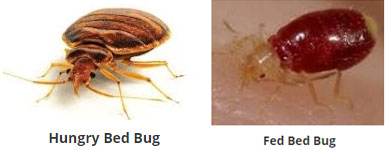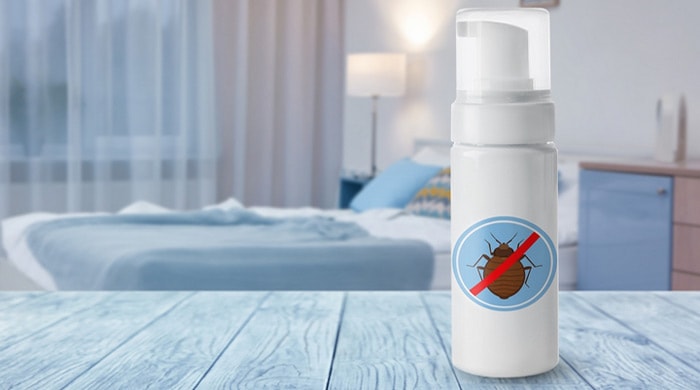How to Get Rid of Bed Bugs from a Mattress

Knowing how to get rid of bed bugs from a mattress can help you to save a lot of money. It can be expensive to use a pest control service. The more bedrooms you have, the more such a service will cost. If you have these bugs in one bedroom, you may have them in them all. That is because bed bugs can move around or more commonly, be carried around by residents and visitors.
If you wake up feeling itchy and see some small red blotches on your arms, back or legs, then you may have bed bugs. They can get into your home on your and your family’s clothing, or on the clothing of visitors. If you have been on vacation, for example, then any bed bugs in your hotel or motel room can get onto your clothes and into your suitcase. They can also hide in furniture such as dressers or nightstands. However, they are more commonly found in used mattresses.
You take this risk if you purchase a used mattress – even from Amazon. These creatures don’t move far from a source of blood, but they can easily spread around in a radius of up to 20 or even 100 feet. They can scuttle from side to side on floors and up or down walls and furniture! They can spread from one room to another, or even from one apartment to another simply by walking!
Here are the aspects of controlling bed bugs that will be discussed here:
While it is fairly obvious why you should learn how to get rid of bed bugs, they do more than just bite and leave itchy red spots. In fact, bed bugs don’t bite as such but suck your blood in much the same way as mosquitoes do. So, considering all the diseases that mosquitoes can transfer, can bed bugs do the same? In fact probably not! Bed bugs have been found to transmit Chagas disease (aka Kissing disease) in laboratory experiments. However, there is no evidence that they do so too much extent in the real world. Not impossible, however!
The main hazard from bed bugs is one of allergy. The redness and swelling of bed bug bites are caused through histamine that can be treated using an antihistamine cream. In rare cases, there may be a violent allergic reaction that will require urgent medical attention.
When a bed bug bites, it transfers an anesthetic and an anticoagulant into the site. The anesthetic stops the immediate pain of a bite, while the anticoagulant keeps your blood flowing freely. Both these can cause an allergic reaction that is usually very mild – but it itches fiendishly!


If you find small insects such as these on your mattress or bedding, then it is almost certain that they are bed bugs. These are shown larger than size. This is about their maximum correct size:
Bed bugs tend to hide around creases and any other areas of your mattress where they may feel safe and hidden. You might find them just under the bottom side of your mattress or down between the mattress and headboard or footboard. Here are some of the more common places you will be likely to find them:
If you have box springs, then you may find around a third of the bedbugs hidden in there somewhere. Your mattress is popular obviously, but just as many can take up residence in your chair or couch. The bed frame and headboard are also popular, with around 10% hiding there. Don’t forget your own clothing, nightstand, dresser and even at the edges of rugs and carpets, wallpaper seam, doors and anywhere else, they may feel safe. Now that you know, they may no longer be safe in these places!
Let’s assume you know you have bed bugs. How do you get rid of them? The first step is to remove all bedding – sheets, pillowcases, and any mattress covers, protectors and blankets. As you remove each item, put it immediately into a plastic bag. Garbage bags are fine. This is to prevent any live bugs from escaping.
If they are machine washable, immediately put them into the washing machine and wash at the highest possible temperature for your fabric. If you also have a tumble dryer, then dry at the highest heat their labels or tags permit. This will destroy any live bed bugs and their eggs.
While your washing machine is cleansing your bedding, get out your vacuum cleaner. Use it on the mattress to remove dead bed bugs, bed bug feces, dried shell casings, and any eggs. Bed bugs can lay their eggs in the seams of your mattress, pillows and box spring. They can also lay them in cracks in your headboard, footboard and the bed frame itself. Vacuum round all of these. Make sure you vacuum top and bottom surfaces, and all around the sides. Do not miss the base – particularly if you have a box spring base with a textile cover.
If you have a pressure steamer (steam cleaner), then use that on the mattress, box spring base and around the areas mentioned above. Once again, make sure you treat the whole mattress. Bed bugs don’t know top surfaces from the bottom, and the seams around all the edges are liable to be contaminated. If you have no steam cleaner,
then it may be worth purchasing one. They are not expensive when compared with the price of a new mattress.
While the mattress, box spring, and bedding are drying, use an insecticide spray to eradicate any bed bugs still alive and to help prevent further contamination. Note that lice and bedbugs are genuine insects, while mites and ticks are not: they are arachnids – of the spider family. Most bed bug sprays will destroy the bugs and also protect sprayed areas for a few weeks: in this case16 weeks. However, always read the label! Make sure the spray is suitable for use directly on your mattress. You can find bed bug sprays and powders online.

Note: When using any bug spray or powder, make sure you read the health and safety information. If in doubt, ask the supplier or manufacturer for a copy of their MSDS sheet (Manufacturer’s Safety Data Sheet).
Climb-Up Interceptors: The only thing your bed should be in contact with is the floor! Make sure your bedding does not touch the wall or any furniture – including your nightstand or bedside cabinet or table. Place ClimbUp interceptors beneath each leg. These are double saucer shaped, and force bed bugs to drop into the bottom of the saucer. The sides are so slippery that the bed bugs cannot climb up and reach the leg of the bed. They are trapped. You can get a pack of 4 of these for under $20.
Mattress Encasement: Having done that, you should now make your mattress bug proof. Purchase a mattress encasement to protect your mattress from any further bed bug infestations. It covers the mattress all round, so no more bugs can get in or on it. An encasement not only protects your mattress from any new bed bugs, but it also keeps any left behind after your treatment inside. So your mattress might have bed bugs, but these bed bugs cannot get you!
Removing bed bugs from dressers, nightstands, couches, chairs and other items of furniture is a similar process to above. However, steam cleaning might be a problem with certain items of furniture. Some do not take well to hot steam. First, vacuum the affected areas with a hand tool until you have removed as much of the visual contamination as you can. Pay particular attention to seams, below cushions and around armrests.
Check cracks and crevices in wooden furniture, making sure you vacuum thoroughly using a crevice tool. If possible, turn the item upside down and check underneath. Use a credit card to get into thin crevices. Loosen up any detritus and then vacuum. Finally, spray using a bed bug spray. This will destroy any live bugs and protect the item from future attacks for two weeks or more after treatment. Trap any bed bugs trying to climb up the legs by placing them in ClimbUp interceptors.
The above information is fundamentally enough for you to know how to get rid of bed bugs from a mattress. It is important that you follow each stage exactly. Fundamentally, the above process:
By following the above process, you will be able to remove any existing infestation and help prevent any future ones. If you understand how to get rid of bed bugs from a mattress in your home, then you need to fear them no more. It will be they that fear you!
Richard has been working in the mattress and bedding sales sector for many years, and he believes that he knows just about all there is to know to help you choose the best possible mattress for your needs. He has been featured on sites like Realtor, Mom.com, etc.
Medical Disclaimer: By using the insidebedroom.com website and/or purchasing any products or services through this website, you are voluntarily agreeing to this Disclaimer. You are agreeing that you have read, understand, and consent to the terms herein.
The information and other content found on this website, or in any linked references, are not intended to be expert medical advice and should not be construed as such. No information on this site, including written text, images, graphics and any other form of information, is intended to be a substitute for professional medical advice, treatment or diagnosis, but is intended for informational purposes only. If you need any form of medical advice or information, then refer to your physician or other medical expert.
Leave a Reply